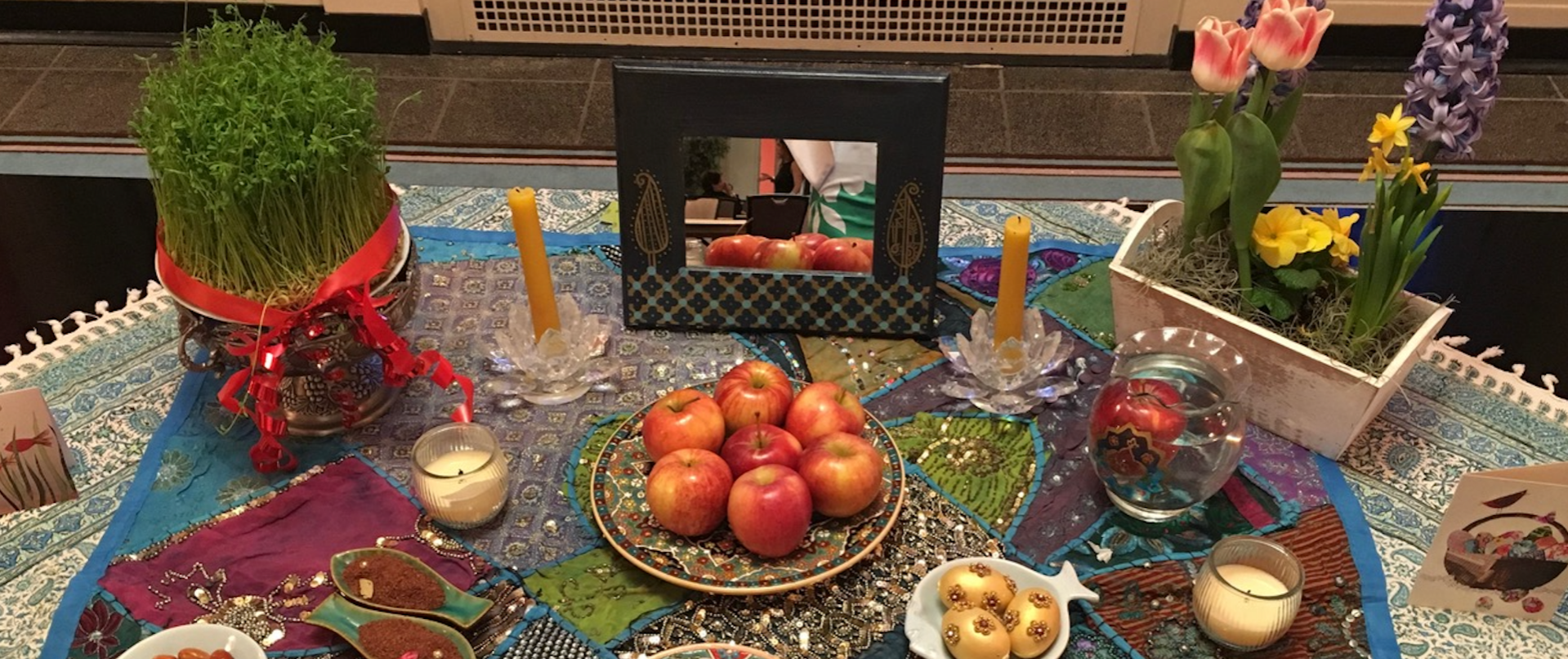
Parisa Ghaderi is an assistant professor in the Department of Art, Art History, and Design. She is a visual artist, curator, educator and filmmaker; and an activist for women’s rights in Iran.
Nowruz is a national new year festivity celebrated by many ethnicities around the world, with origins in ancient Persian culture. It marks the beginning of spring and includes rich traditions that symbolize renewal and hope for the new year.
Each Norwuz, I always set the Haft-Sin table—even if I'm busy with schoolwork—as it usually falls at the peak of the semester when due dates are approaching. It is a reminder to pause and focus on the fact that the new year is coming, the season is changing, and spring is right around the corner. At the same time, it can feel lonely for two reasons: most of the Iranian community here has no family nearby to gather to celebrate; and Nowruz is not as widely recognized as holidays such as Christmas, Chinese and Lunar New Year or Holi.
On Nowruz, many people in central Asia and around the world gather with friends around the Haft-Sin table. The time of the new year changes every year—it could be midnight, early in the morning or during the day. After the new year is announced on Persian TV broadcasts and following a festive song played by the Persian Sorna, we hug each other, say "happy new year" and wish one another health and luck. And for those of us living in the United States, right after the TV broadcast, we try to call our family, friends and loved ones—though we have to be lucky, as the lines get very busy. Some people also try to call before the new year is announced to be with their loved ones and celebrate together. Usually, older family members give presents or money to younger ones as a symbol of prosperity and good luck. Later, we eat dill rice with fish as the most traditional first meal of the new year.
Nowruz pirooz!

The Haft-Sin table is set with seven symbolic items, each starting with the Persian letter S ( س):
Sabzeh (سبزه): sprouting grass, the symbol of rebirth and growth.
Samanu (سمنو): wheat germ sweet pudding, the symbol of power and strength
Senjed (سنجد): oleaster, the symbol of love
Somāq (سماق): sumac, the symbol of sunrise
Serkeh (سرکه): vinegar, the symbol of patience
Seeb (سیب): apple, the symbol of beauty
Seer (سیر): garlic, the symbol of health and medicine
Other items that are sometimes included:
Sonbol (سنبل): hyacinth, the symbol of spring's arrival
Sekkeh (سکه): coin, the symbol of wealth and prosperity
Saat (ساعت): clock, the symbol of time